Samsung has revamped its strategy for mid-range smartphones. The South Korean giant has refreshed its Galaxy A-lineup for the offline markets and has launched an all-new lineup in the form of Galaxy M-series, which is being sold in India exclusively through online channels.
Recently, the company launched the Samsung Galaxy M40 smartphone in India, which is currently the top-end model in this series. The segment costing ₹15,000 to ₹20,000 is currently the hottest segment in India and the Galaxy M40 is also in this segment.
So, let’s find out if the Samsung Galaxy M40 is good enough to dominate the mid-range segment which is currently ruled by the likes of Xiaomi and Realme.
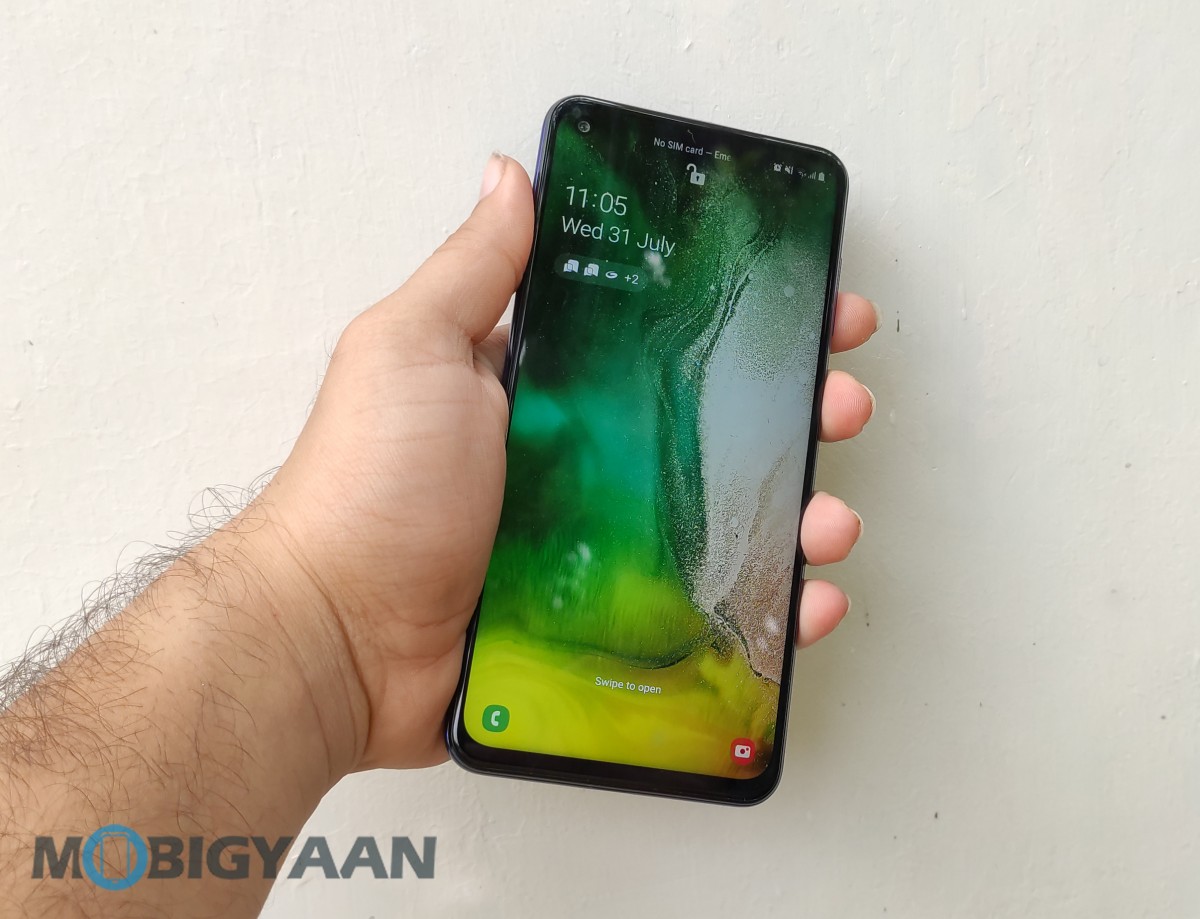
What’s in the box
- Galaxy M40
- 15W fast charger
- USB-C cable
- USB-C earphones
- SIM ejector tool
- Documentations
Specifications
- CPU: Qualcomm Snapdragon 675 octa-core processor
- RAM: 6 GB
- GPU: Adreno 612 GPU
- Operating System: Android 9 Pie
- Display: 6.3-inch Full HD+ Infinity-O LCD display with 2340 x 1080 pixels screen resolution and Corning Gorilla Glass 3 protection
- Rear Camera: 32 MP primary sensor with f/1.7 aperture + 5 MP depth sensor with f/2.2 aperture + 8 MP 123-degree ultra-wide angle camera with f/2.2 aperture
- Front Camera: 16 MP with f/2.0 aperture
- Internal Storage: 128 GB
- Connectivity: Dual SIM, 4G VoLTE, Wi-Fi, Bluetooth, GPS/ A-GPS, and a USB Type-C port
- Other: Fingerprint Scanner
- Colors: Midnight Blue and Seawater Blue
- Battery: 3500 mAh with 15W fast charging
Design
Usually, the design of the mid-range smartphones are almost similar to each other and this is especially true for the Samsung devices. However, the company has opted for a punch-hole design for the M40.
The display comes with a punch-hole cutout which the company likes to call “Infinity-O” display. This is similar to the design we saw on the company’s flagship lineup smartphone — Galaxy S10e, which is quite impressive.
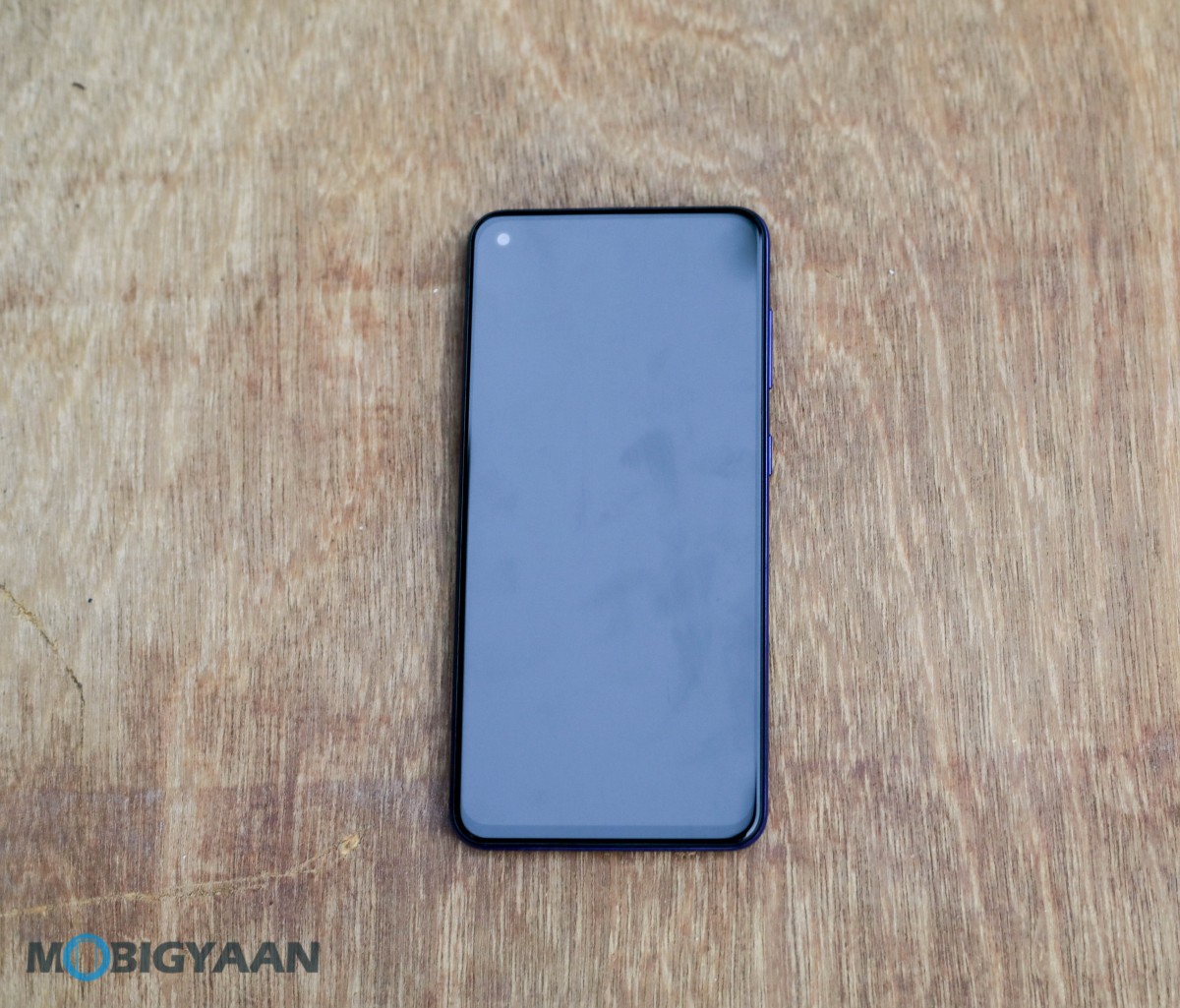
The display is surrounded by fairly minimal bezels on three sides as the chin is slightly thicker but it’s not obstructive. There’s no earpiece on the top as Samsung is offering “screen sound” technology that converts the display into a speaker.
The smartphone has a power button and the volume rocker keys on the right side while the SIM card and microSD card tray is on the left side. On the bottom, there’s a USB Type-C port as well as a speaker grille and a microphone. At the top, there’s nothing apart from a microphone.
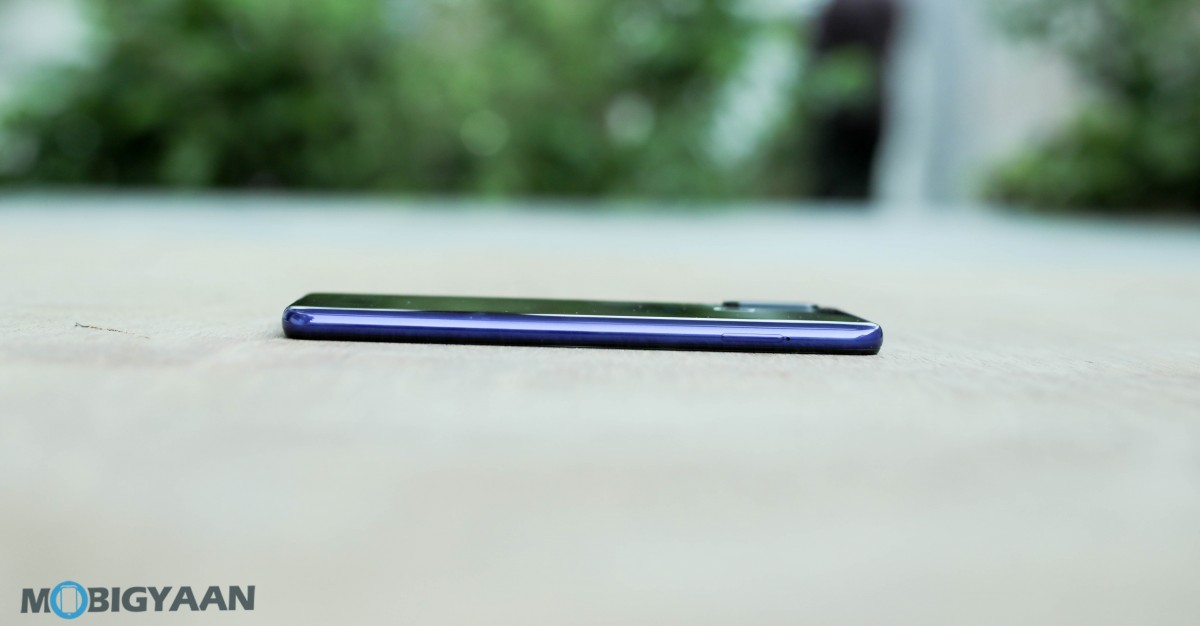
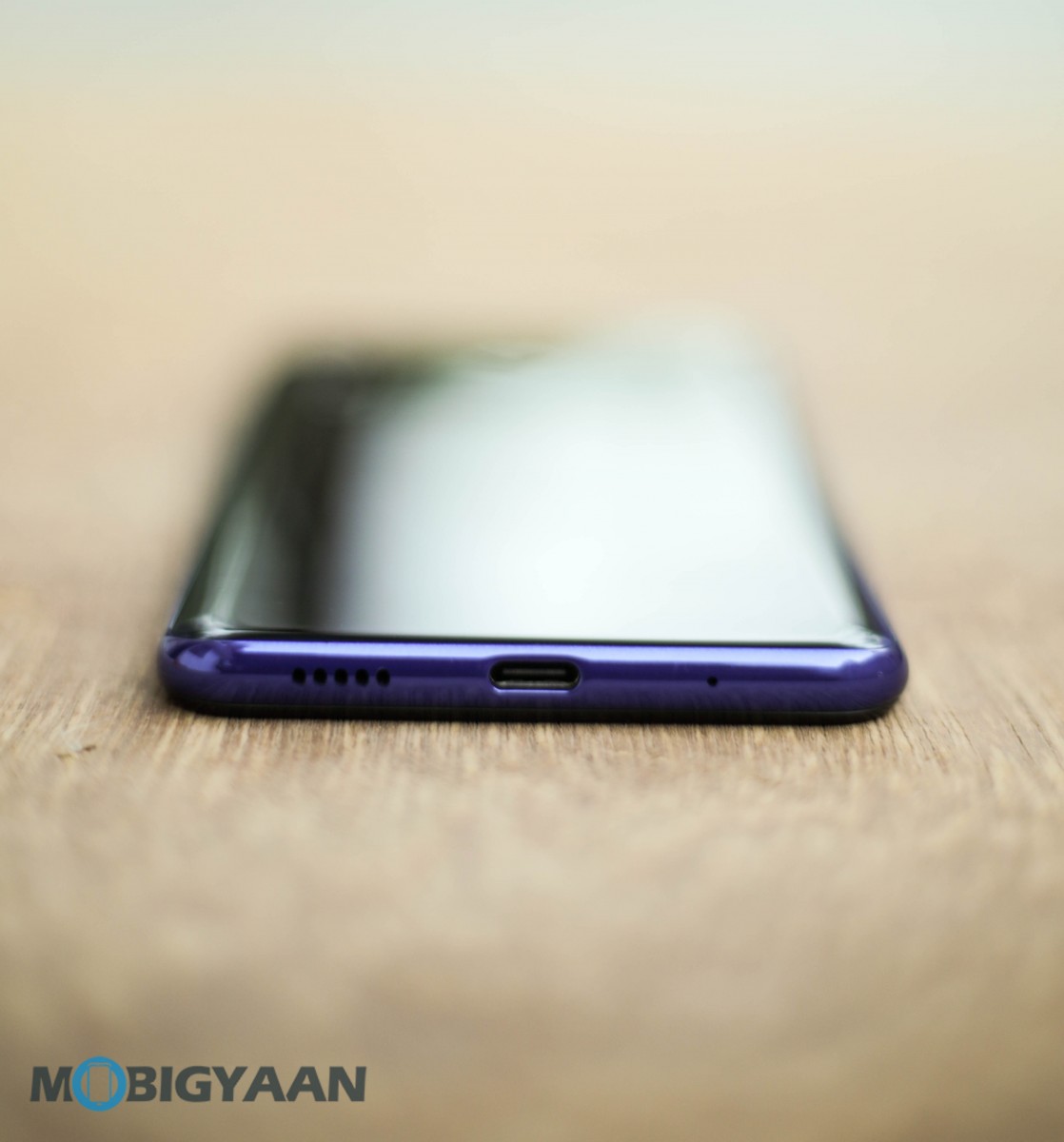
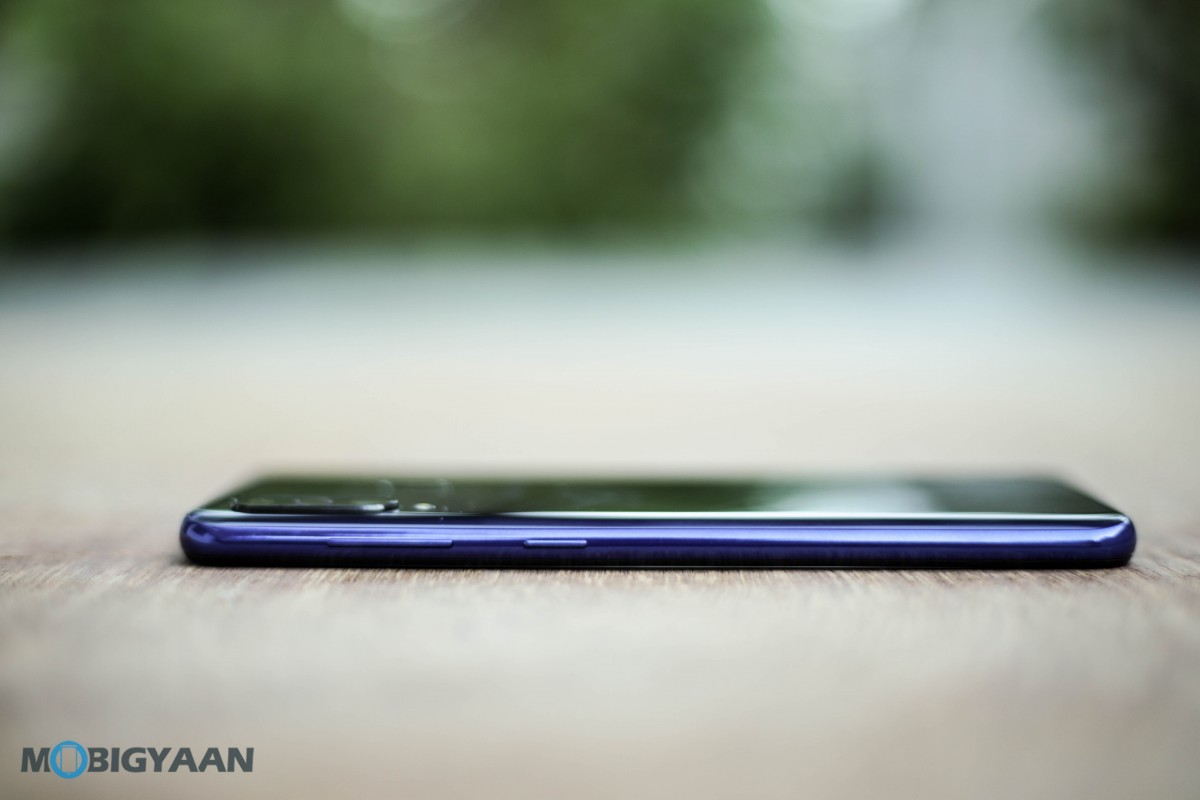
The smartphone is comfortable to hold and probably has the best hand-feel in this series. The device, weighing around 170 grams, is also comparatively lightweight as the phone is made using polycarbonate material.
However, the polycarbonate material used by the company is a fingerprint magnet. Also, it’s advisable to use a back cover because the phone is prone to scratches over long-time usage.
Display
The smartphone features a 6.3-inch LCD Full HD+ Infinity-O display with a screen resolution of 2340 x 1080 pixels, offering 409ppi pixel density. The IPS LCD display is a step-down from the Super AMOLED display panel on its predecessor Galaxy M30.
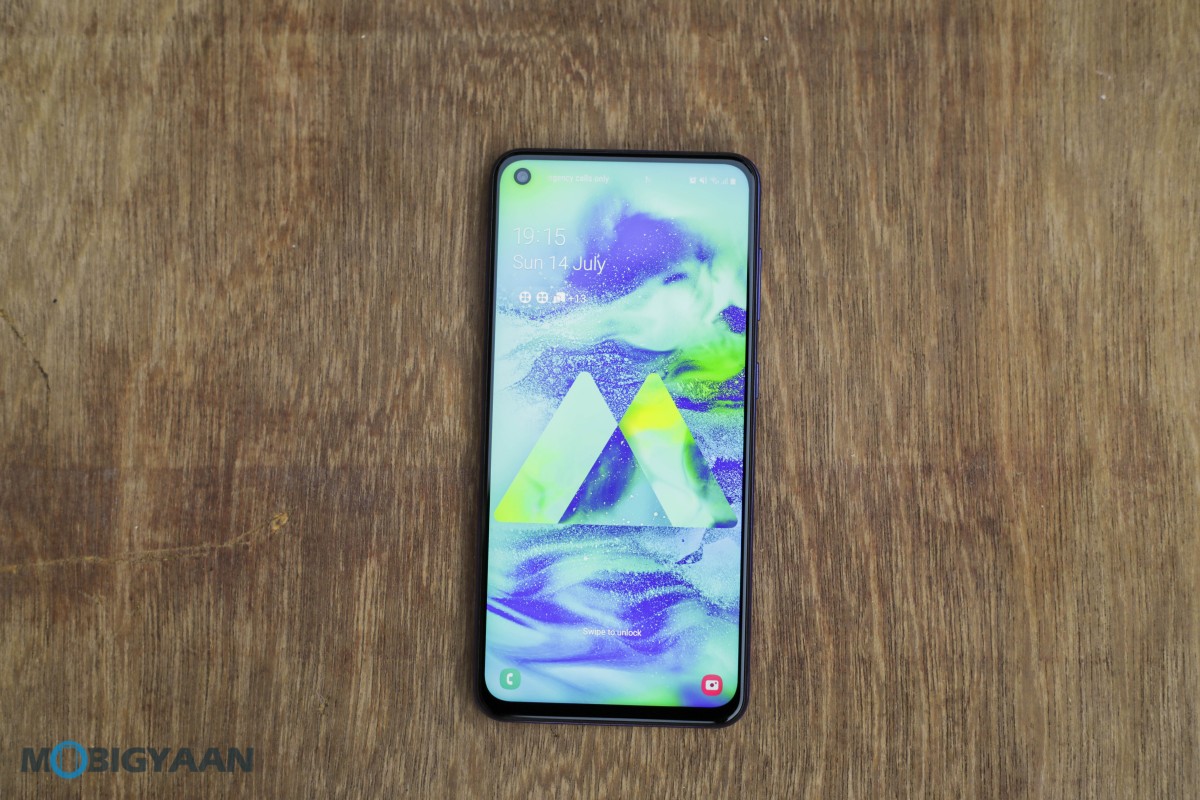
But the display on the phone is good as the colors are nicely saturated and the brightness levels are also good. If you are watching a lot of multimedia content on a smartphone, you’ll love the display on this phone.
Since it uses LCD panel and not an AMOLED panel, it will not offer the kind of richness, color depth and appeal that an AMOLED panel offers. The Galaxy M40 also comes with support for Widevine L1 certification, enabling you to stream content on platforms like Netflix and Amazon Prime Video in true HD quality. However, there’s no option for switching the color tuning on the device.
Performance
The device comes powered by Qualcomm Snapdragon 675 octa-core processor along with 6 GB of RAM and 128 GB of internal storage. The phone is powerful enough to handle daily tasks with ease. However, the experience is not as smooth as of some Galaxy A-series phones.
However, the phone is quite good when it comes to multitasking and we don’t have any complaints in this department. Playing heavy and intense games such as PUBG Mobile on high settings was a smooth experience. But for the better gaming experience, you should choose the media settings and we got a solid frame rate when the graphics were set to HD.
While the phone did get a bit hot when used for a longer duration, it wasn’t uncomfortable to keep using it. We also ran a number of benchmark tests on the device and the results for the same are mentioned below.
The smartphone recorded 2,369 points in the single-core test and 6,469 points in the multi-core test on benchmarking platform GeekBench.
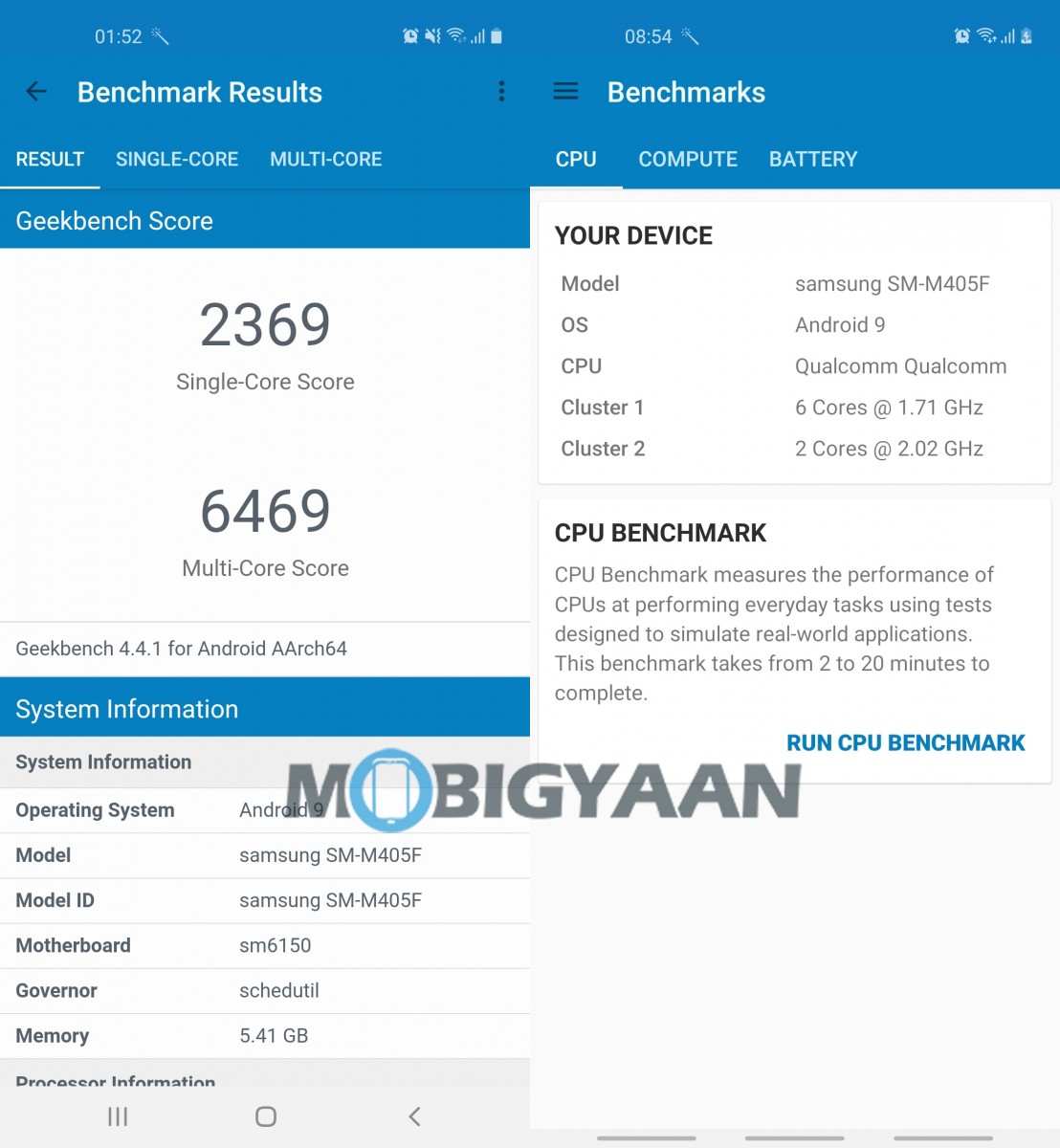
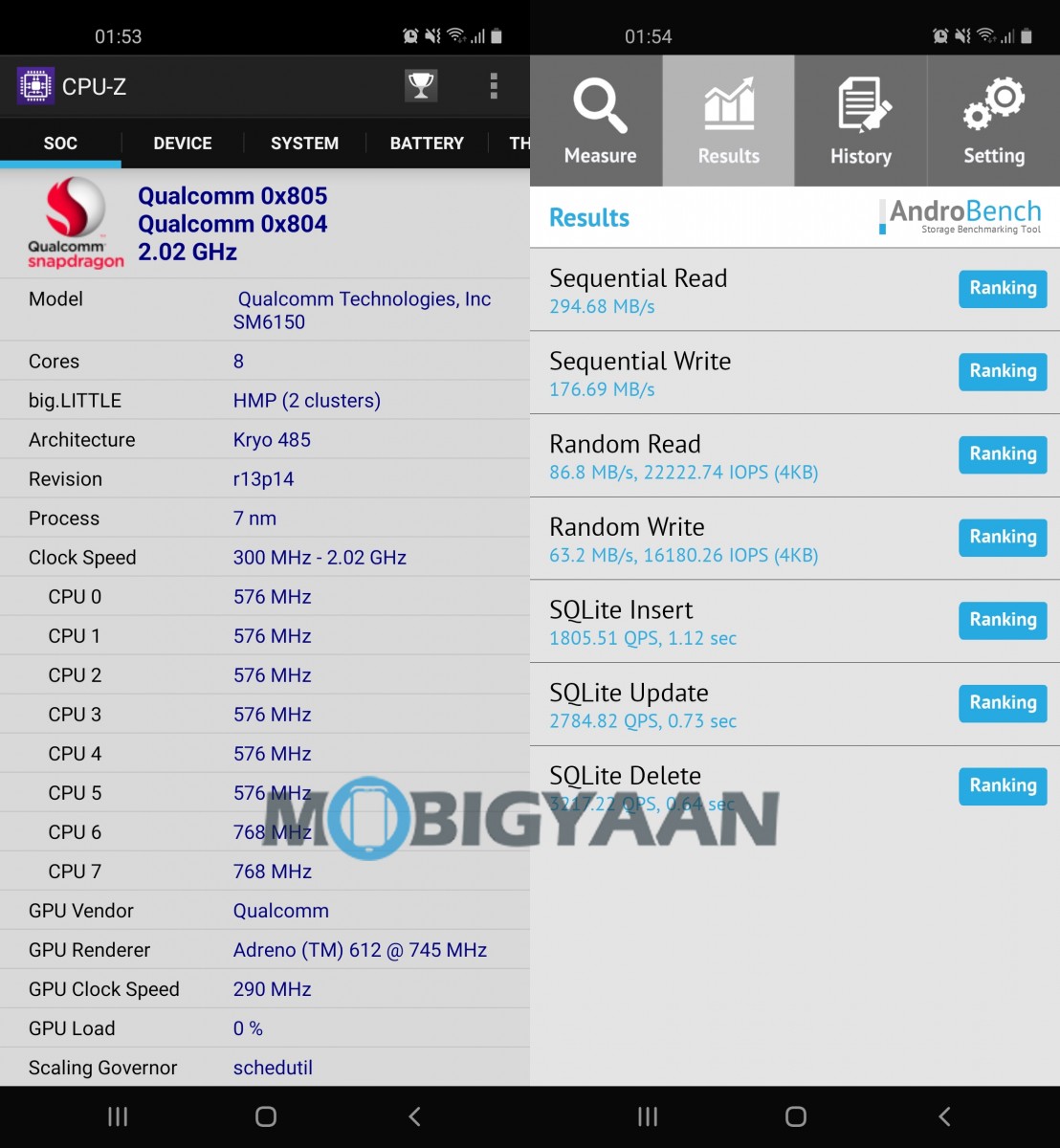
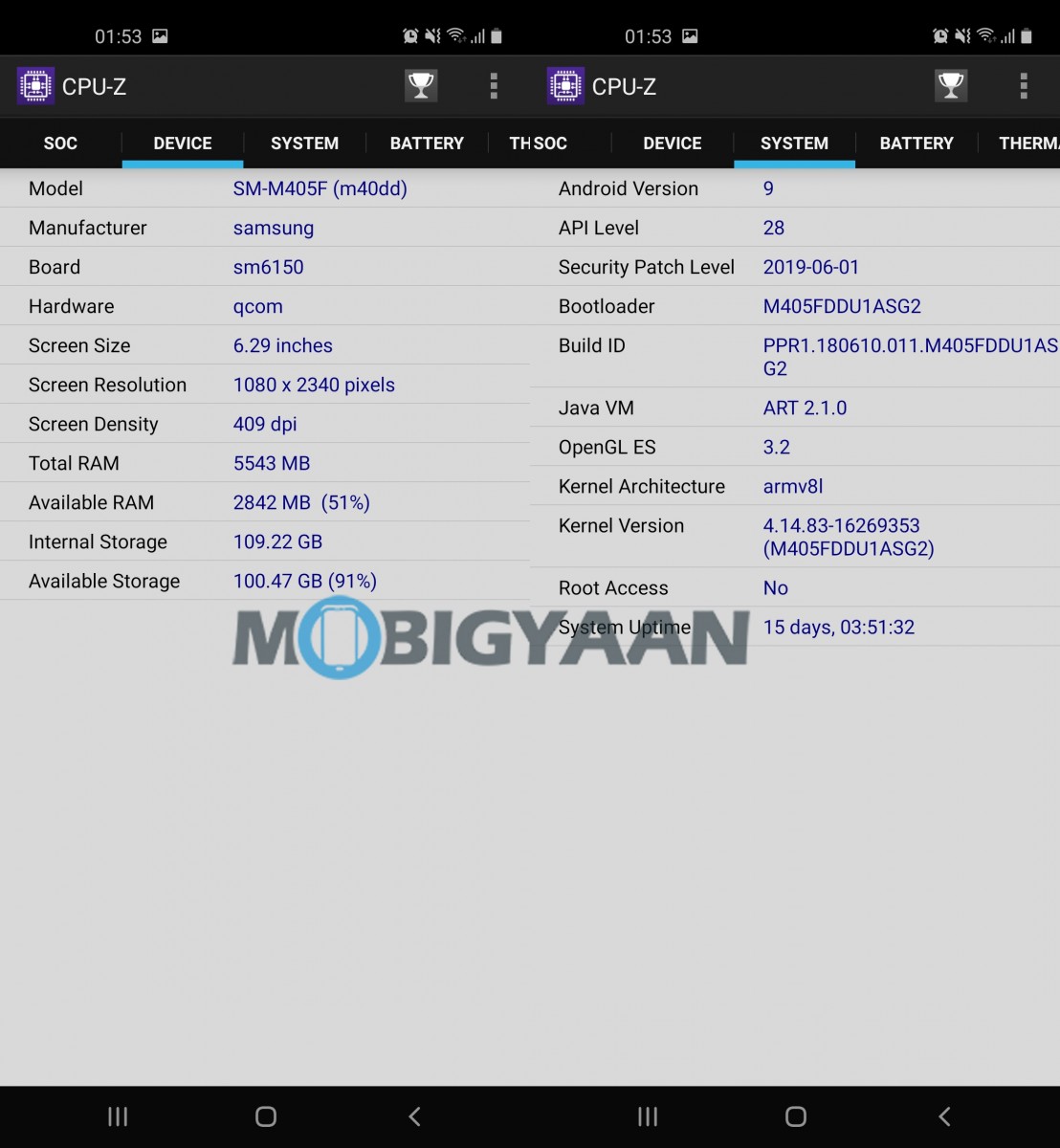
Camera
The Galaxy M40 comes with four camera sensors in total — three on the back and one on the front. On the back, the device features a triple camera setup that consists of a 32 MP primary sensor with f/1.7 aperture, an 8 MP ultra-wide sensor with f/2.2 aperture and a 5 MP depth sensor.
There’s no telephoto lens on the phone’s backside. On the front side, it comes with a 16 MP snapper for taking selfies and video calling.
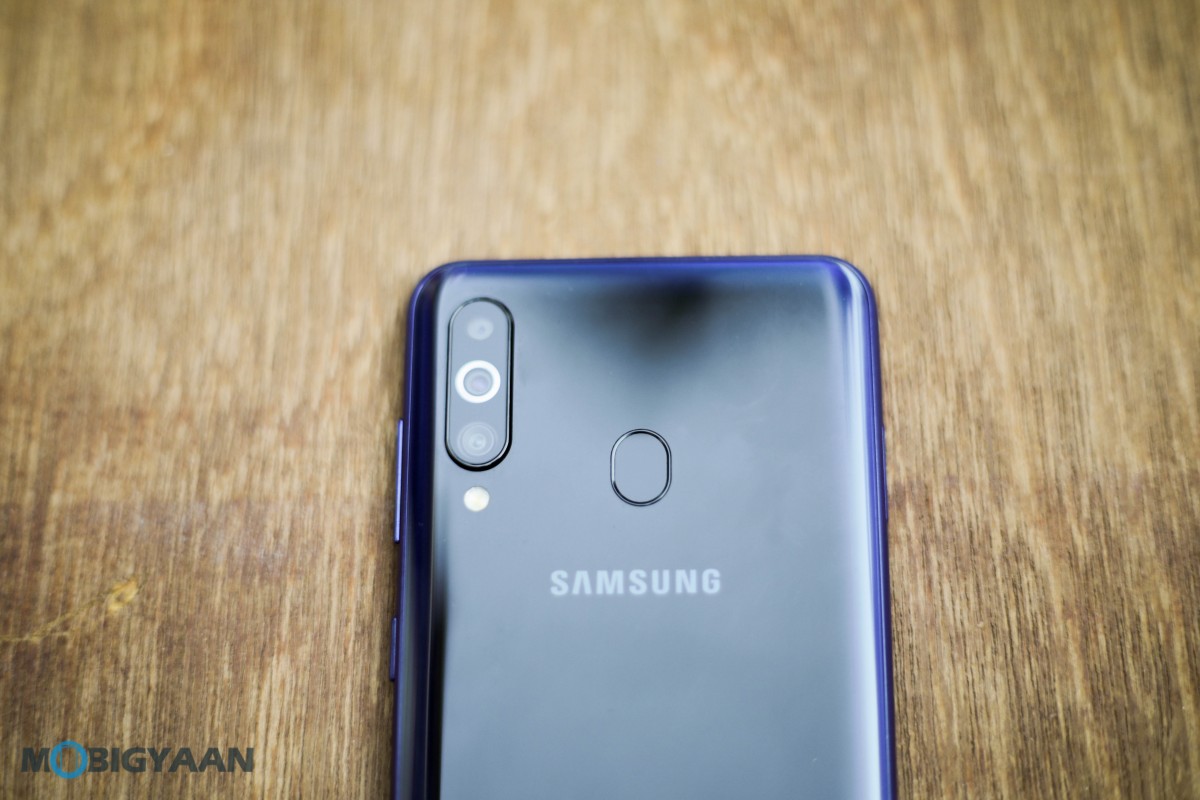
As for the camera results, it does a reasonably good job of capturing images. The images captured using the phone looks good on the phone but because of the heavy noise reduction, the details often get lost.
By default, the phone captures images in 12 MP resolution from the 32 MP sensor. This helps in reducing noise and improving performance in low-light conditions. Sometimes, we noticed a shutter lag, which then results in blurry images.
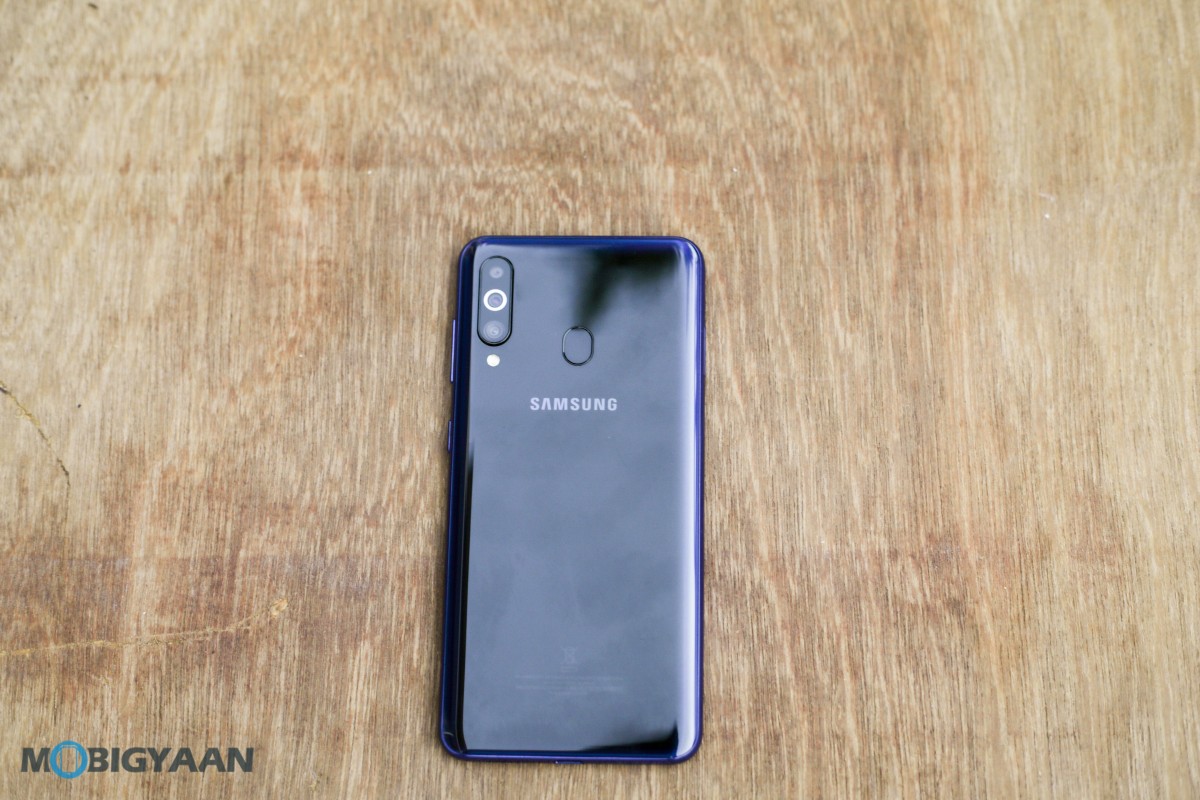
It also has some issued with over-exposing as most of the times, the images turn out to be brighter and over-sharpened. The wide-angle sensor doesn’t support auto-focus and has some issues with lens flare. The portrait mode is good but sometimes the bokeh effect looks artificial.
The 16-megapixel selfie camera also provides average results, but shutter lag is an issue when there isn’t a lot of light around. It also supports portrait mode, which works decently well.


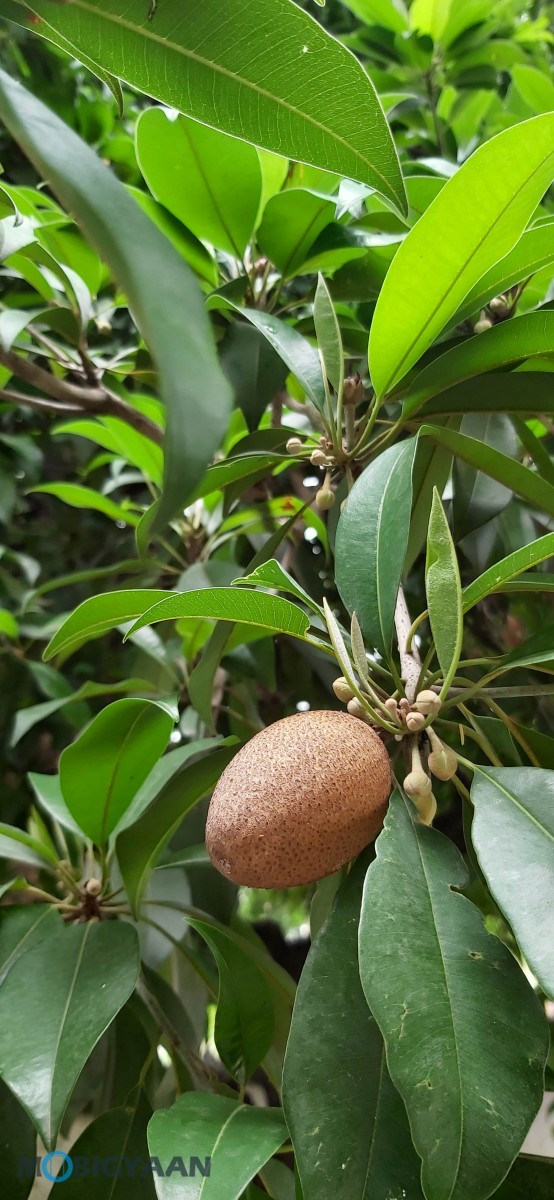
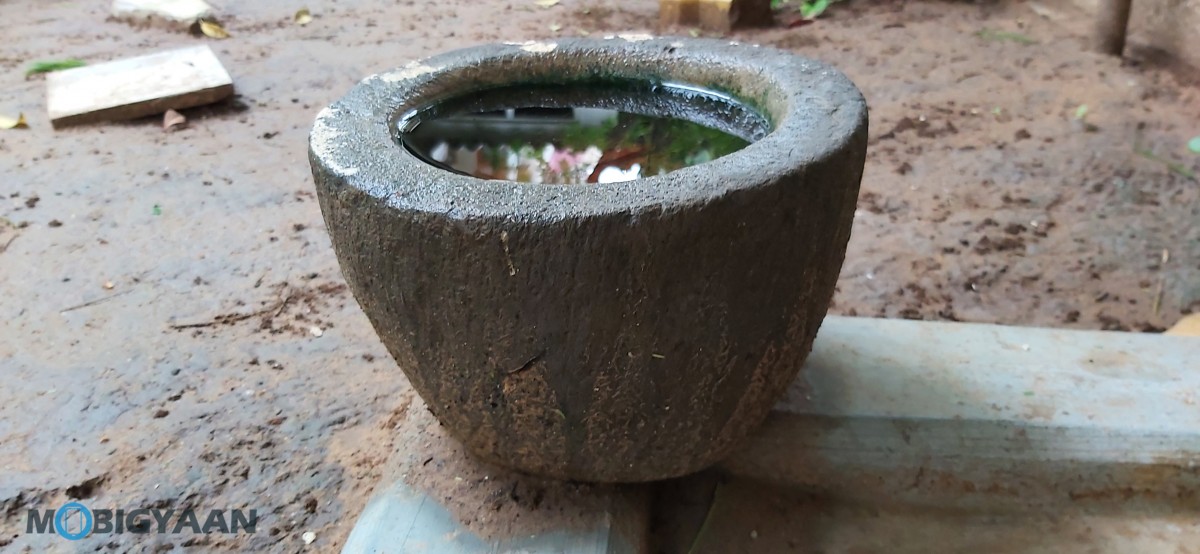

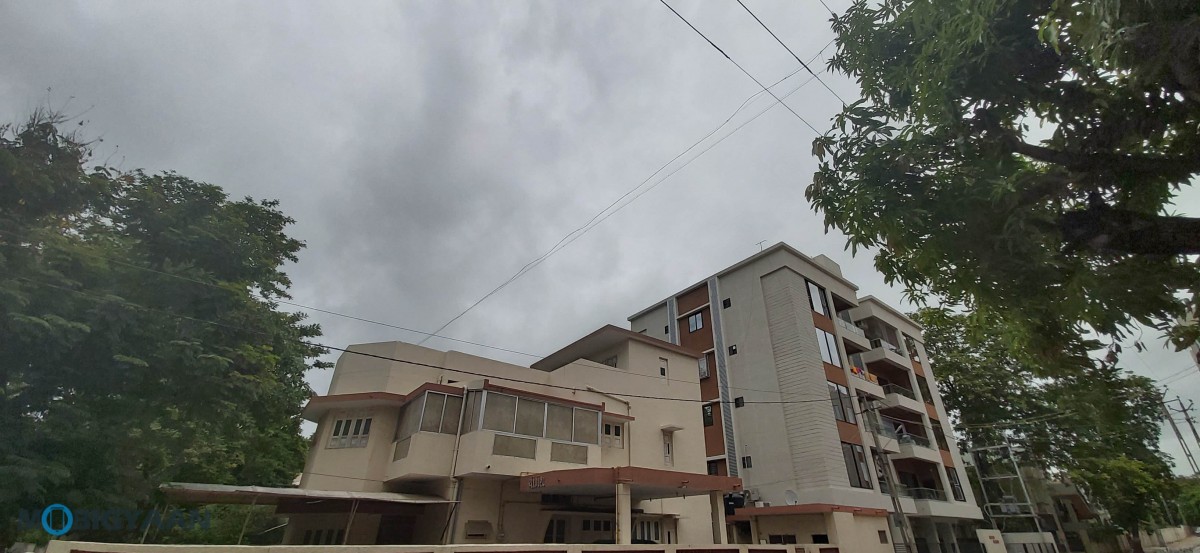
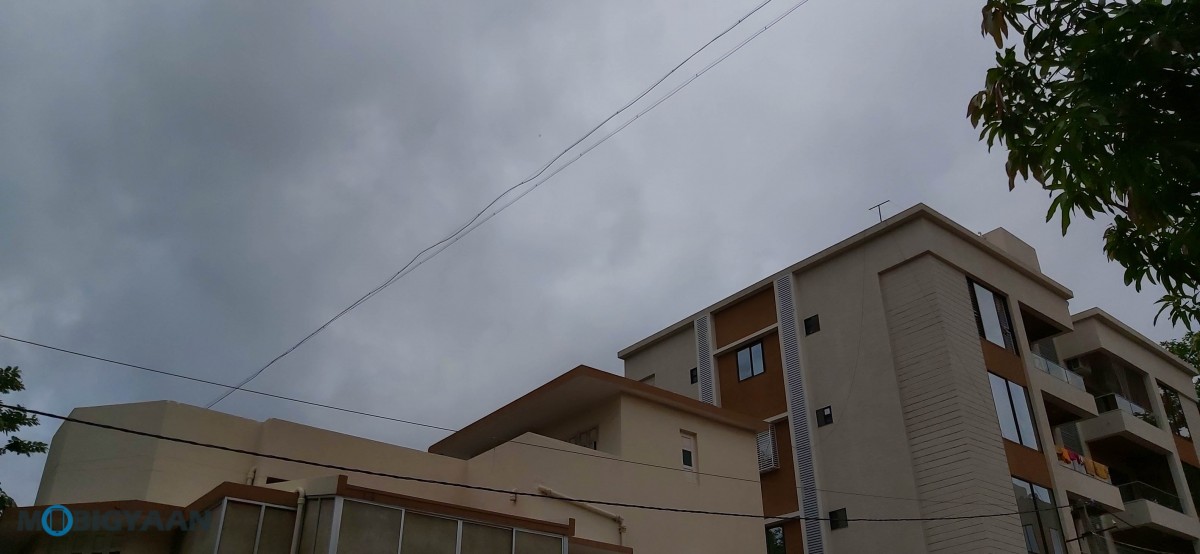
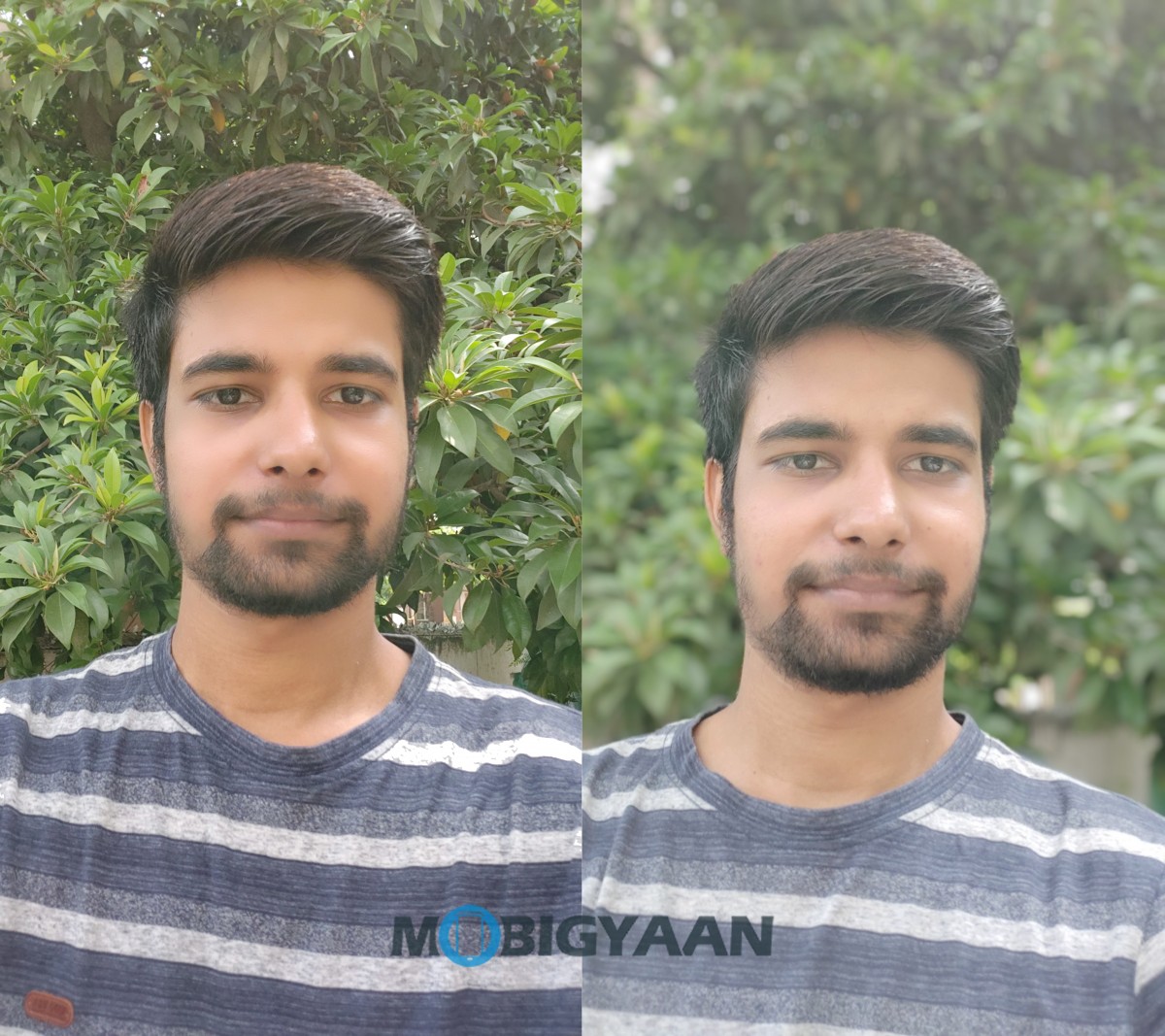






Software
The Samsung Galaxy M40 runs Android 9.0 Pie operating system out-of-the-box with the company’s own One UI 1.1 on top. This is one of the best user interfaces from the South Korean giant as it has made some major changes.
The new interface comes with reduced visual clutter and bloat as it aims to offer a good user experience. The UI is quite simple and is very easy to use for first-time buyers or those who are not a long-time user of smartphones.
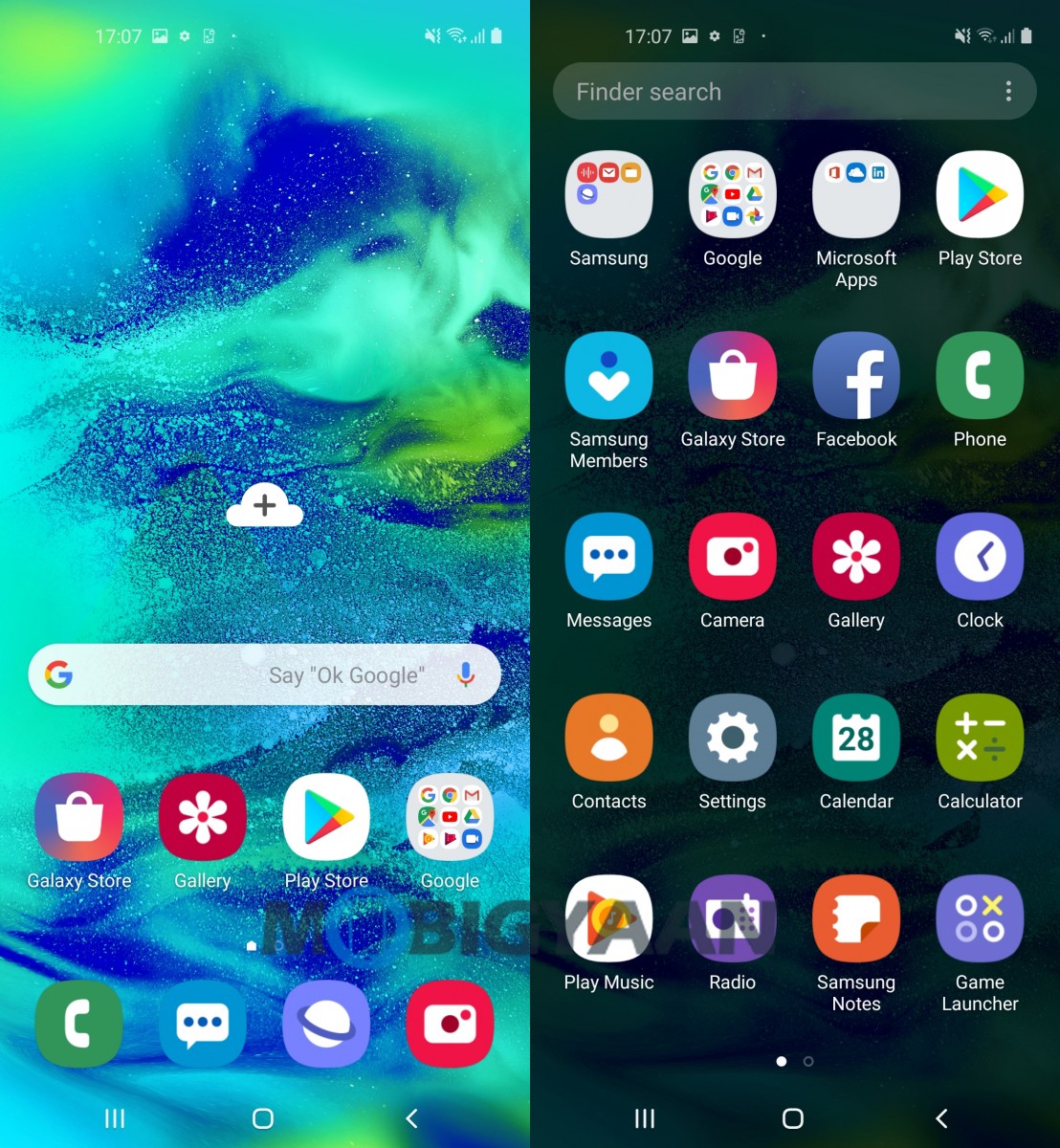
It enables users to make suitable tweaks to the launcher and customize the interface as per the user’s preference. For instance, the user is able to choose if he/she wants an app drawer or all the apps on the home screen itself.
There’s also an option to change the icon grid size on the home screen as well as the app drawer. The user interface comes with several useful features such as navigational gestures and the popular system-wide dark mode.
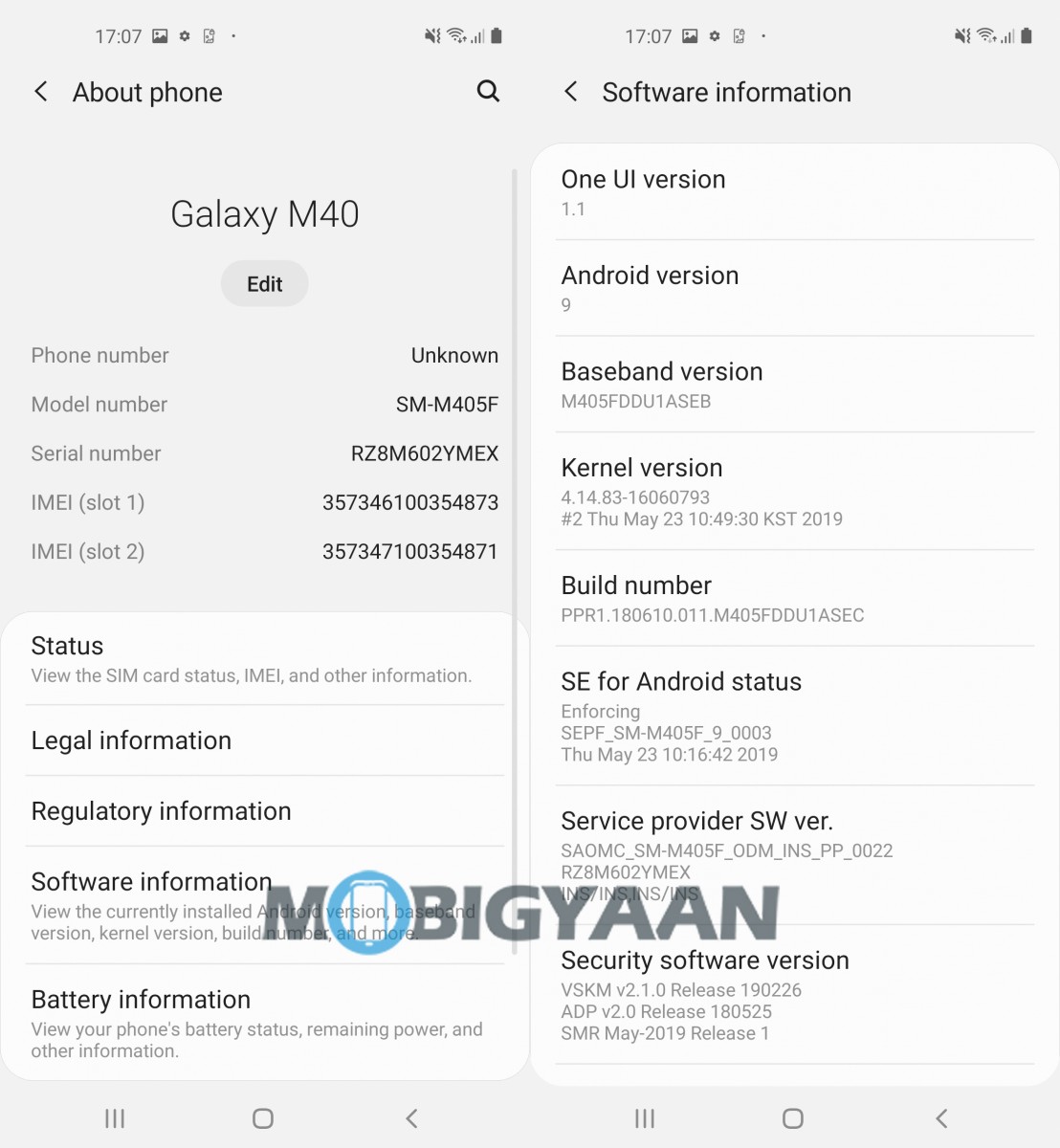
However, the phone does come with a few bloatware such as Samsung’s own Galaxy range of applications and a few other third-party apps like DailyHunt, Facebook, and Helo. But the good news is that some of these apps are removable.
Battery and Others
The device is powered by a 3500 mAh battery which is smaller compared to other offerings in this price range. The phone isn’t able to provide a full-day battery life even though Samsung has optimized the phone for all-day usage.
We were able to get around 4.5 hours of screen-on time, which is not as good as its competition. The phone comes with a 15W charger in the box, which can fully charge the device in 95 minutes.
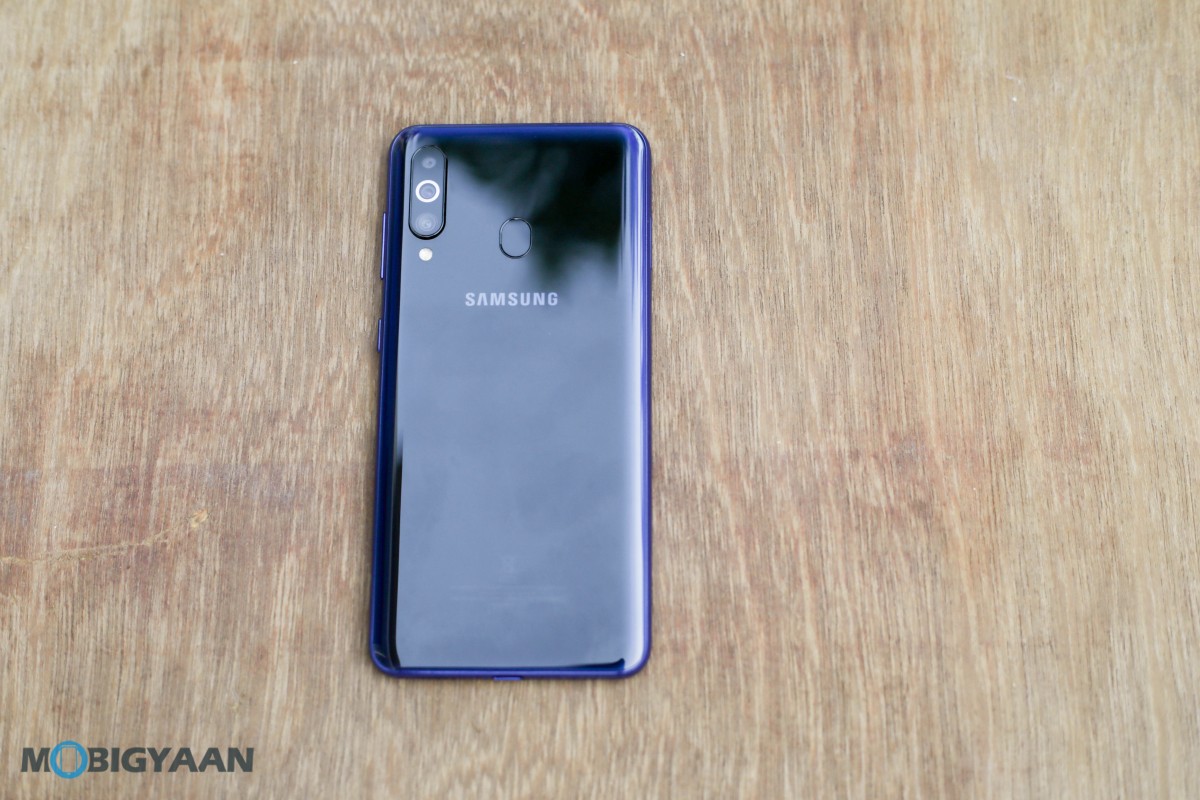
As for the audio, the smartphone does not have a 3.5mm headphone hack and you’ll have to rely on the USB Type-C port for the audio as well. The company does provide USB-C headphones in the box but they are there just for the sake of it.
The audio output from the phone’s speaker is loud but is not impressive. There are high chances that you’ll cover the bottom-firing speakers while watching a video.
Verdict
While the Samsung Galaxy M40 is the top-end model in the lineup, there’s no denying the fact that Samsung has cut a few corners with this smartphone. The phone doesn’t have an AMOLED display, 3.5mm headphone jack and comes with a lower capacity battery. These are the downgrades that don’t make the phone worthy of its ₹19,990 price tag.
Considering the phone’s shortcomings, it’s not a value-for-money offering. Compared to this, the Xiaomi Redmi Note 7 Pro offers much better value-for-money and is a good alternative to this one. You can also check out the Redmi K20 if you can increase your budget a bit to around ₹22,000.
